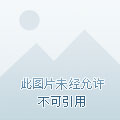
Hello! I am Liu Jian
Today is the 562nd issue that Jian Ge said to accompany you
According to the data of the Seventh National Census of the National Bureau of Statistics, by the end of 2020, the number of elderly people aged 60 and above in the mainland reached 264 million, accounting for 18.7% of the total population, which is the largest elderly population in the world.
As the saying goes, "There is an old family, if there is a treasure", but the health problems brought about by the aging of the population cannot be ignored. Among them, senile sarcopenia is receiving more and more attention.
Sarcopenia and its hazards
Sarcopenia refers to senile syndrome in which muscle mass decreases, muscle strength decreases, and/or somatic dysfunction occurs with increasing age.
According to the recently released "Expert Consensus on the Diagnosis and Treatment of Sarcopenia in the Elderly in China (2021)", about 50 million people worldwide currently suffer from sarcopenia, and the number of patients is expected to reach 500 million by 2050. According to mainland data, the prevalence of sarcopenia in the elderly in the community is 8.9% to 38.8%, the prevalence of sarcopenia in men is higher than that in women, and the higher the age, the higher the prevalence of sarcopenia, and the prevalence of sarcopenia in the elderly aged 80 years and older can be as high as 67.1% [1].
Muscle loss is too fast, not only will cause the elderly to decline in mobility, easy to fall and other conditions, but also affect blood sugar regulation, blood lipid metabolism and other capabilities, and even increase cardiovascular diseases, especially the risk of stroke [2], will increase the hospitalization rate and medical expenses of the elderly, seriously affect the quality of life of the elderly, and even shorten the life of the elderly.
Prevention and screening of sarcopenia
Therefore, sarcopenia will be a major health problem for the elderly on the mainland. Many elderly people shrink their clothes and food, save money to prevent aging, do not know, save more "muscle" can prevent aging.
Specifically, regular screening, attention to prevention, and early intervention are important measures for the prevention and treatment of sarcopenia in the elderly.
With regard to screening, it is recommended that seniors over the age of 60 conduct regular self-screening or visit a community hospital for sarcopenia screening. In general, sarcopenia screening includes four modalities: measuring calf circumference to assess limb skeletal muscle mass; holding force with a grip device to measure upper extremity grip; knee flexion and extension strength or 5 sit-up tests to evaluate lower extremity muscle strength; and somatic function based on pace. These indicators allow for the diagnosis and evaluation of sarcopenia [1].
For self-screening in the elderly, the method of measuring the circumference of the calf is optional, that is, the maximum circumference of the calf is measured using an inelastic leather ruler. If the circumference of the lower leg of the male is less than 34cm and the circumference of the female calf is less than 33cm, the risk of having sarcopenia is high, and the patient should go to the geriatric department of the hospital for further examination and follow the doctor's instructions for intervention and treatment.
In terms of prevention and treatment, studies have found that resistance exercise can significantly increase muscle mass and muscle strength. Elderly people with physical conditions should insist on muscle strength exercises, and it is recommended to do them every other day, 3 times a week, for 30 minutes each time.
Of course, the elderly exercise is first of all to pay attention to safety, you can take small weight, multiple times of muscle endurance exercises, such as the following four movements:
1) Sit and raise your legs: sit on the front edge of the chair, hold the chair with both hands, sit upright on the upper body, raise the left leg and straighten it, parallel to the ground, insist on 5 to 10 seconds, and then change the right leg.
2) Stand up and sit down: Cross your hands over your chest, put your feet apart, get up from your chair, and sit down again. Stand up and inhale, sit down and exhale, moving slowly.
3) Push-ups: Choose to support the wall with both hands, or support the stool with both hands, or perform push-ups with both hands.
4) Dumbbell or elastic rope push: small dumbbell, mineral water bottle or elastic rope, etc., carry out upward pushing action.
The above actions are done in groups of 10 to 20 times, 3 to 4 groups per day, and between each group can rest for 1 to 2 minutes. Exercise in the elderly should be gradual, gradually increasing resistance as strength increases, and only in this way can muscle growth be continuously stimulated. In addition, you can also eat more high-quality protein foods to promote muscle growth.
Brother Jian said
Sarcopenia is a syndrome of age-related skeletal muscle loss, muscle strength, and muscle function.
With the increase of the elderly population in the mainland, sarcopenia is called an important health problem for the elderly and should be paid attention to its screening, prevention and treatment.
Elderly people over the age of 60 can measure the calf circumference for self-screening, adhere to muscle exercise to prevent sarcopenia, and if there is a suspicion of sarcopenia, they should go to the hospital for a clear diagnosis and actively receive treatment.
Today's content is finished, and the next issue is more exciting.
Heart health knowledge is in "Jian Ge Says Heart"
We'll see you next time.
"On the Heart" - Medicine, Health and Lifestyle of the Heart
Works by Professor Liu Jian